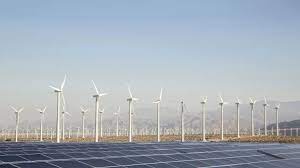Coal will remain India’s largest source of electricity generation by 2030 and additional new plants will be required, even as the nation adds record clean energy installations to hit climate targets. India, the world’s third-largest emitter, is seeking to meet surging electricity demand driven by rising per-capita energy consumption and a post-pandemic industrial rebound at the same time it takes action to decarbonize its power sector, according to the power ministry’s Central Electricity Authority.
“Availability of affordable and reliable electricity is a key factor in sustainable growth of the country,” Ghanshyam Prasad, the authority’s chairperson, said in a report. Coal will account for about 54% of electricity generation in 2030 and as much as 46 gigawatts of additional capacity will be required alongside new renewables, the authority said in the report published Thursday. The fossil fuel currently accounts for almost three-quarters of generation and mines are striving to dig out material at a record pace to avoid shortages that caused blackouts in recent summers.
Installations of solar, wind, hydro, biomass and nuclear plants will reach more than 500 gigawatts by 2030, an almost tripling of current levels, and account for 64% of the country’s generation capacity.Prime Minister Narendra Modi’s government scaled up its climate ambitions last year, setting higher targets for clean energy capacity and to reduce the emissions intensity of the economy. India is offering incentives to add more solar or wind power, and aims to become a global hub for production of green hydrogen and green ammonia.
Still, Modi’s administration has previously opposed international efforts to set firm deadlines to phase out the use of coal and envisages a key role for the fuel for decades to come. About 2 gigawatts of coal-burning plants will be phased out through 2030, the report said, a fraction of an earlier plan to shutter down 25 gigawatts of old plants.
The country has 26.9 gigawatts of coal power plants in construction and new projects totalling as much as 19.1 gigawatts may need to be built, according to the authority’s report. Emissions from India’s power sector are forecast to rise about 11% on current levels by the end of the decade to 1,114 million tons of carbon dioxide, according to the authority. Globally, pollution linked to electricity generation may have peaked last year and in 2022 and will begin to fall this year, climate think-tank Ember said last month.

 Iran Energy News Oil, Gas, Petrochemical and Energy Field Specialized Channel
Iran Energy News Oil, Gas, Petrochemical and Energy Field Specialized Channel



